How to Get Your Artwork Noticed

Getting your artwork noticed can be a daunting challenge.
Quick Summary
To gain visibility as an artist, prioritize creating original and high-quality work that reflects your unique style. Establish a strong online presence through professional profiles and a dedicated website. Utilize social media for engaging with audiences and showcasing your art. Network within the art community, participate in local scenes, and leverage online marketplaces for broader exposure. Seek media coverage and enter competitions to enhance recognition, while continuously improving your
Artists have to create great work and get it in front of a big and appreciative audience. Visibility is key for artists not only to get noticed but to stay financially viable.
Create Great, Original Artwork
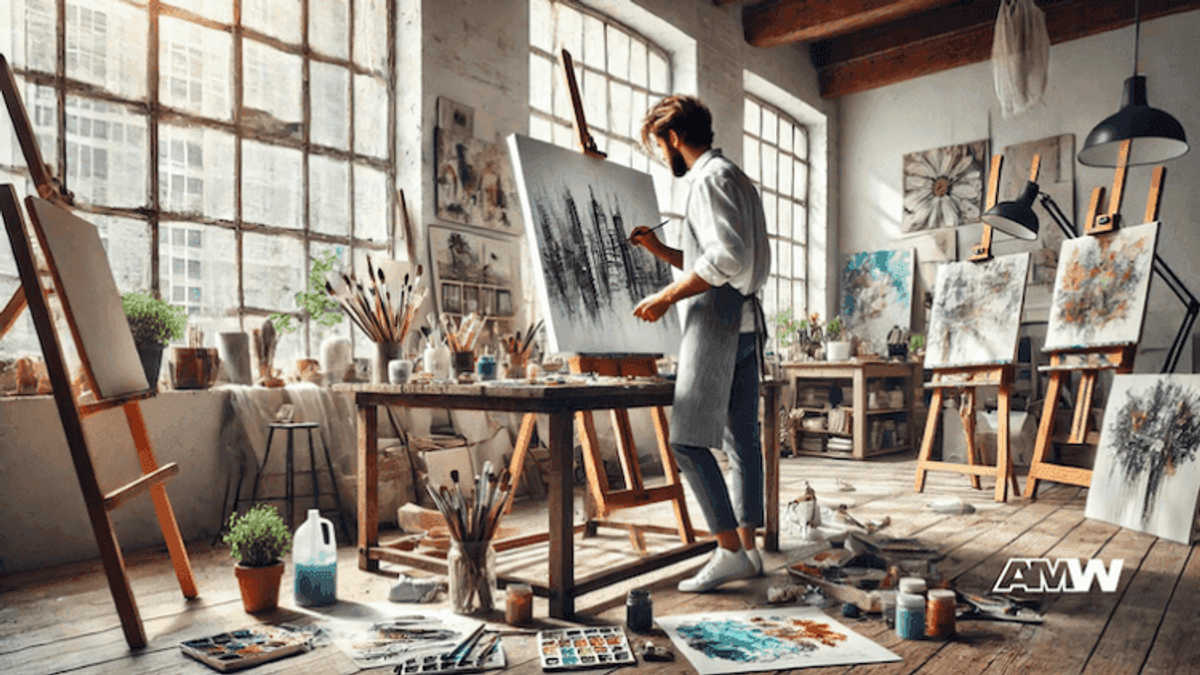
The foundation of getting your artwork noticed lies in the quality and uniqueness of the work itself.
Ready to Grow Your Business?
Get a free consultation and custom strategy tailored to your goals.
Great artwork stands out and leaves a lasting impression. Invest in good materials and tools to produce work that’s the best of you. Originality is key; developing your own style that sets you apart from other artists makes a big difference.
By focusing on creating work that’s technically sound and yours alone you’re laying the ground work for your visibility efforts.
Developing a signature style involves trying out different mediums, techniques, and subjects until you find what resonates with you and your audience.
This process not only improves the quality of your work but also helps you create a cohesive portfolio that speaks to your artistic self.
The more distinct and great your artwork is, the more likely it is to get noticed in a crowded market.
Get Online
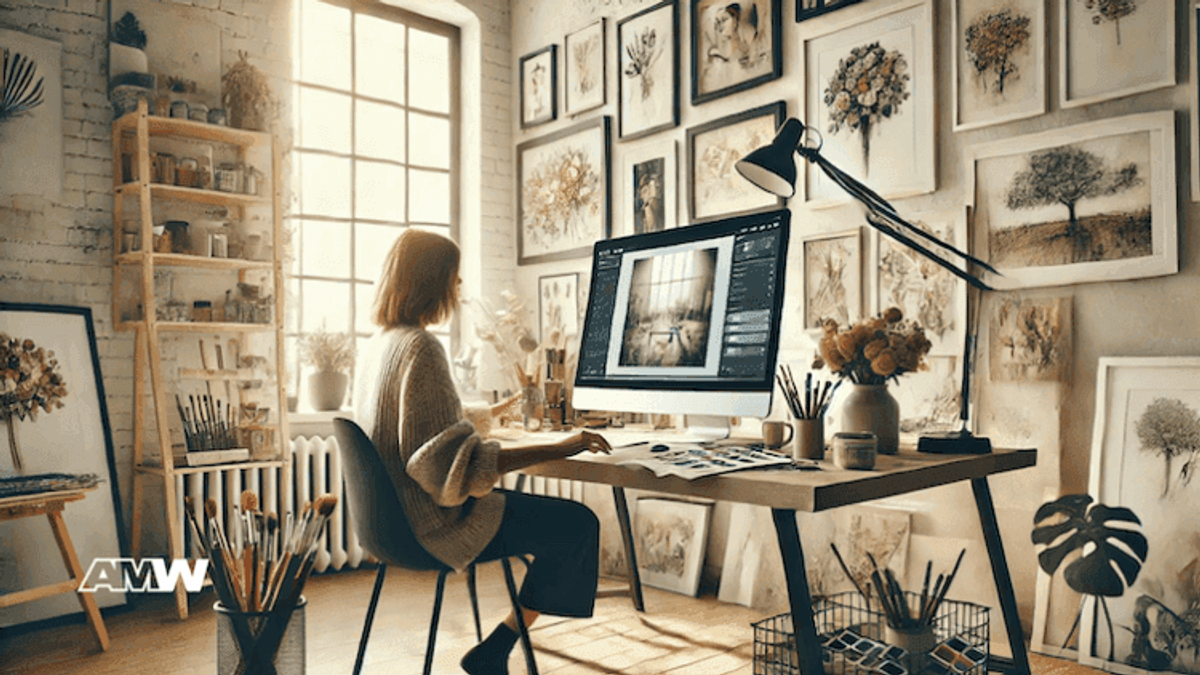
Having an online presence is essential for any artist who wants to get seen. Start by setting up professional profiles on the major art platforms and social media networks.
These profiles should showcase your best work, a brief bio and your contact details. Consistency is key; update your profiles regularly with new work, announcements and behind the scenes content to keep your audience engaged.
Having a personal website or online portfolio is also important. Your website is a central place where buyers, galleries and fans can see your entire body of work. Make sure your website is easy to use, visually pleasing and mobile friendly.
Have sections for your bio, artist statement, portfolio, and a blog or news page to share updates and insights into your process. By being active and professional online, you’ll reach a bigger audience and make meaningful connections.
Use Social Media
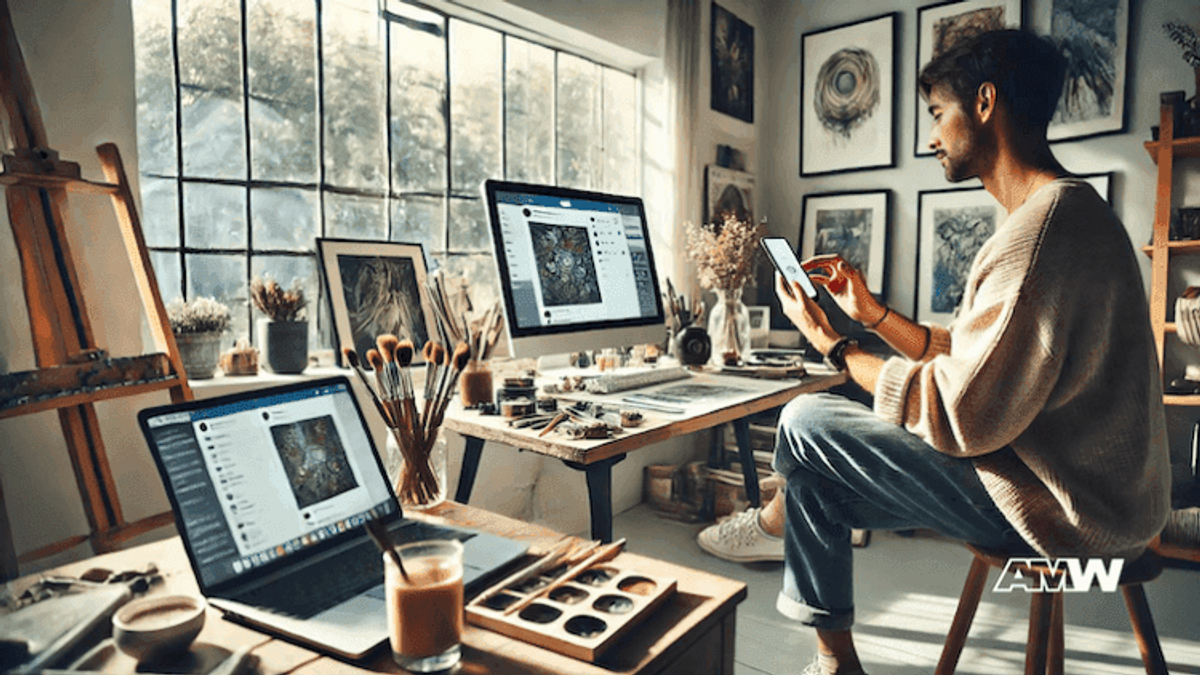
Social media can be a tool for artists to promote and connect with a global audience. Each platform has its own strengths and can be used to your advantage.
For example, Instagram is visual and great for showcasing your work through images and videos. Facebook is for more detailed posts and community building, and X is for updates and conversations with other artists and art lovers.
To use social media effectively post regularly and engage with your audience. Share a mix of content; finished pieces, work in progress, studio shots and personal insights into your process. Use relevant hashtags to get your posts seen and comment and share others work.
Building a community around your art will lead to organic growth and exposure. Remember to utilize analytics to monitor your performance and make any necessary adjustments to your strategy.
Network Within the Art World
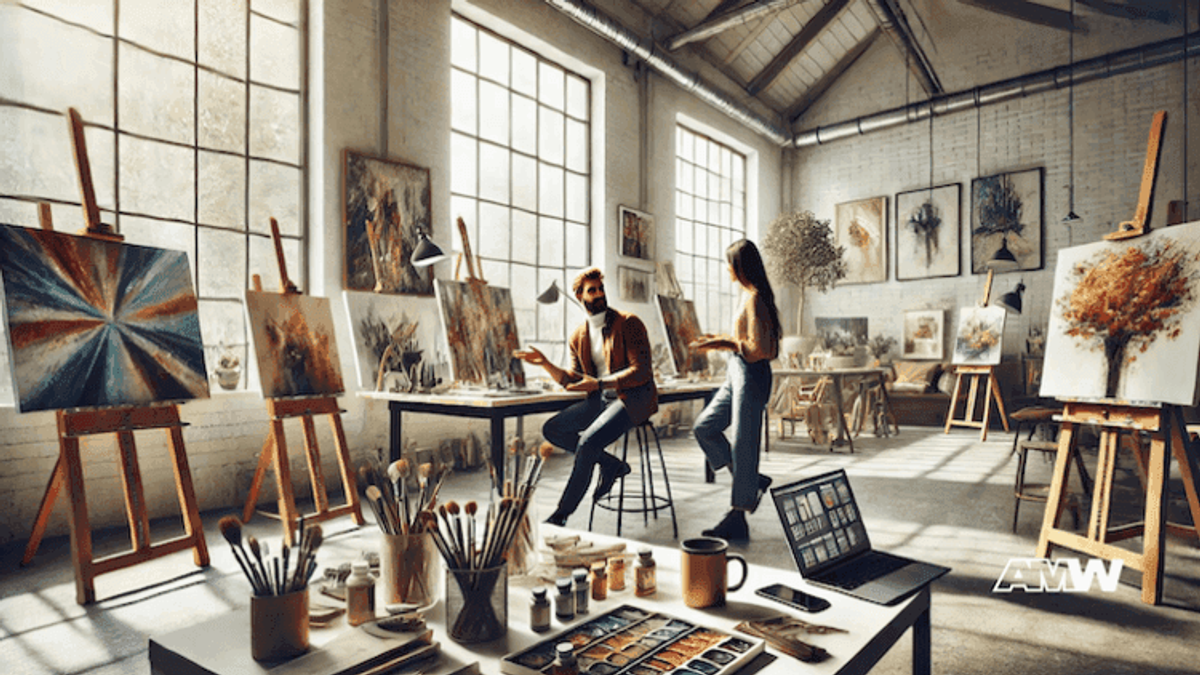
Networking is key to getting your artwork seen. Networking can open doors to opportunities like exhibitions, collaborations and commissions. Attend art fairs, gallery openings and other industry events to meet other artists, curators and potential buyers.
These events are a great opportunity to showcase your work, get feedback, and learn from others in the field.
Joining artist groups and associations can also increase your visibility. These organizations often have resources, support, and platforms to showcase your work. Be active in group activities, attend meetings, and volunteer for events to build your reputation and expand your network.
Collaborating with other artists on projects can introduce your work to new audiences and foster beneficial relationships. Networking is online and offline, so make sure you engage with your peers in person and on social media.
Get Involved in Local Art Scenes
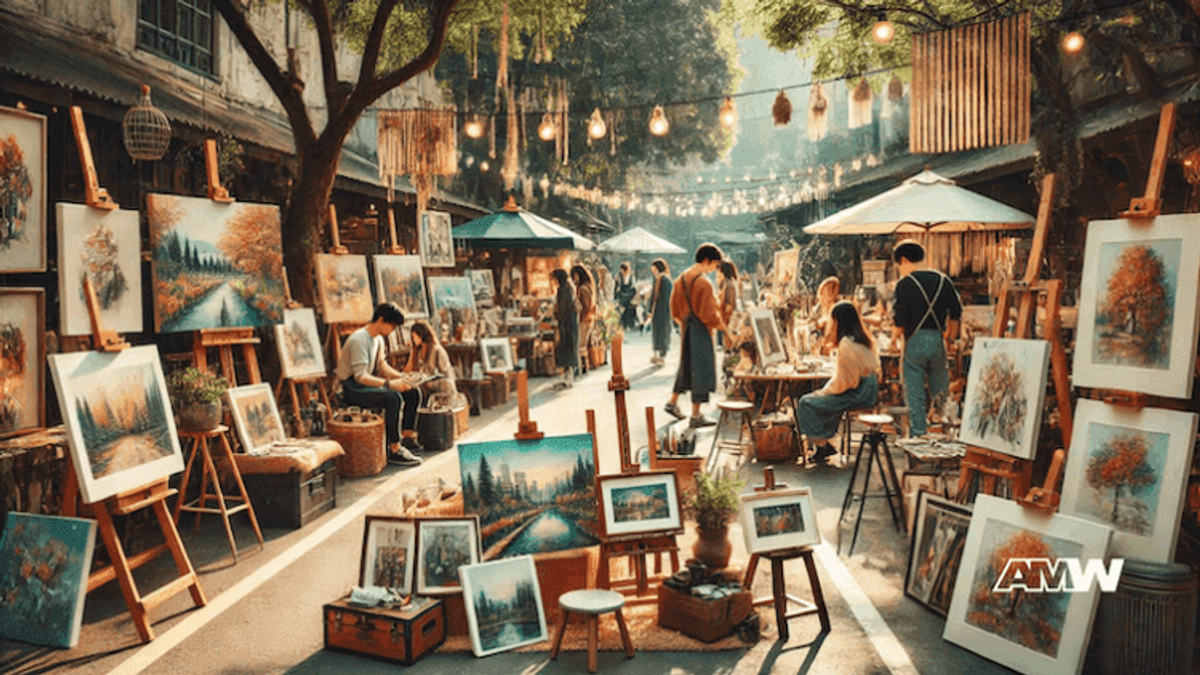
Getting involved in your local art scene is a great way to get your artwork seen. Local galleries, art shows, and community events are platforms for you to showcase your work and connect with art lovers in your area.
Enter local exhibitions and apply for shows that fit your style. Build relationships with local gallery owners and curators, and they may offer you solo and group shows.
Consider doing public art projects like murals or installations which can get you huge visibility. Public art not only benefits the community but also acts as an advertisement for your work.
Ready to Grow Your Business?
Get a free consultation and custom strategy tailored to your goals.
Partner with local businesses to display your art in their spaces like cafes, restaurants and boutiques. These venues get you in front of a diverse audience who may not visit traditional galleries.
Getting involved with your local community also means supporting other local artists and attending their events. By building a supportive network, you contribute to a healthy local art scene and increase your chances of getting support for your work.
Use Online Marketplaces and Galleries
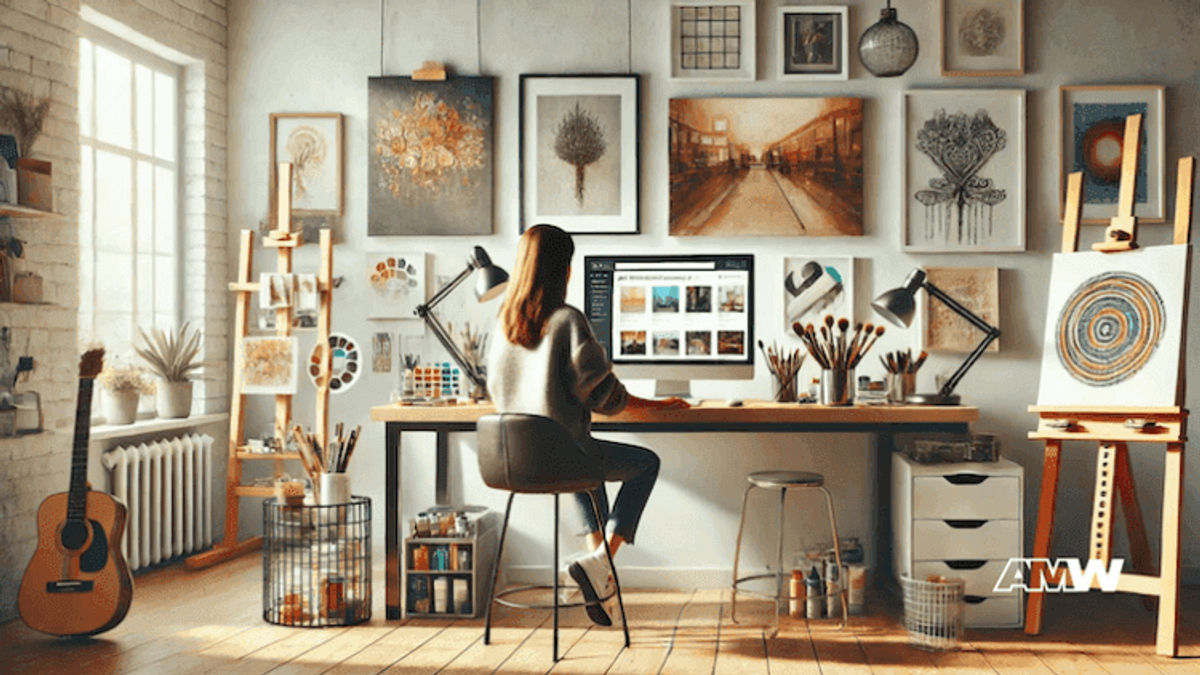
Artists can use online marketplaces and galleries as a global platform to display and sell their work. By signing up on multiple art platforms, artists can reach a bigger audience beyond their local community.
When choosing a marketplace make sure you understand the pros and cons of each. Consider the target audience, commission rates and level of exposure.
To get noticed on crowded platforms, make sure your profile is complete and professional. High-quality images of your work are essential as they are the first impression buyers will get.
Write descriptions that tell the story behind each piece and include tags and keywords to get found. Update your portfolio regularly and engage with visitors to build a following and sales. Also, use any promotional tools the platform offers, like featured listings or advertising.
Get Media Coverage and Publicity
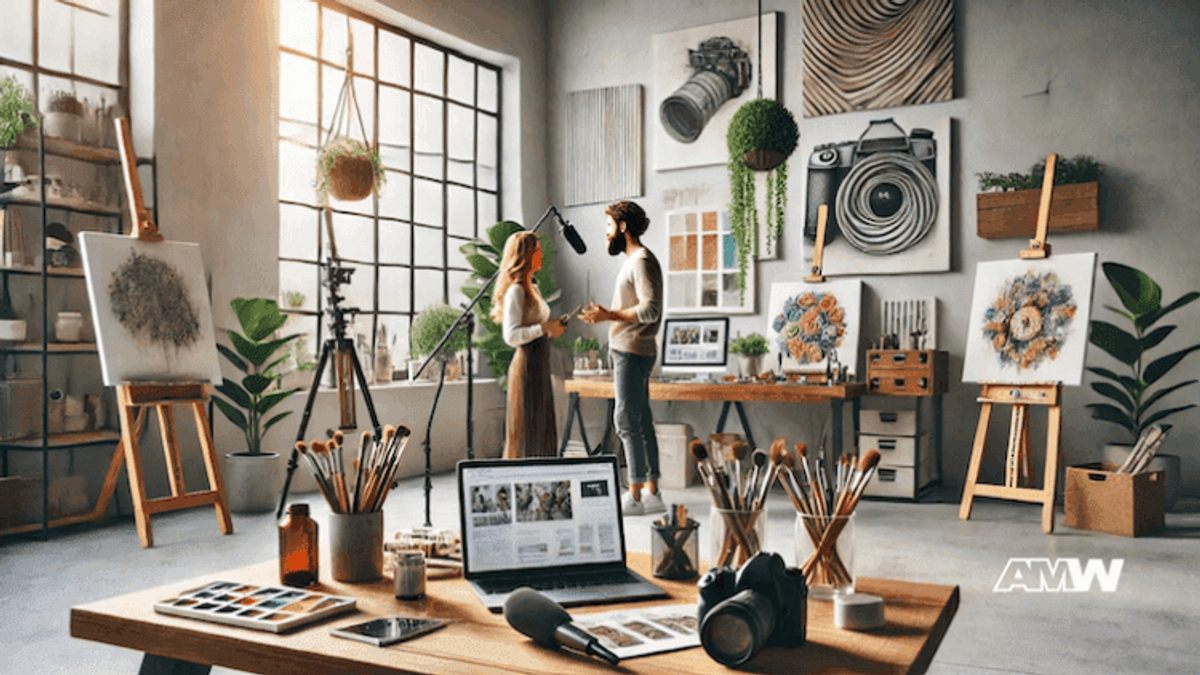
Getting media coverage and publicity can get you huge visibility as an artist. Reach out to art blogs, magazines and local newspapers with a well written press release and high quality images of your work.
Highlight any unique aspects of your work, upcoming exhibitions or milestones in your career. Building relationships with journalists and editors can get you recurring coverage and bigger features.
Besides traditional media consider using online PR tools and services to distribute your press releases wider. Write engaging artist statements and provide insightful comments on your work to make your press materials more interesting.
Doing interviews and podcasts can get you in front of new audiences and position you as an expert in your field. Consistent and strategic media outreach will keep you in the public eye and attract new fans and opportunities.
Enter Competitions and Art Contests
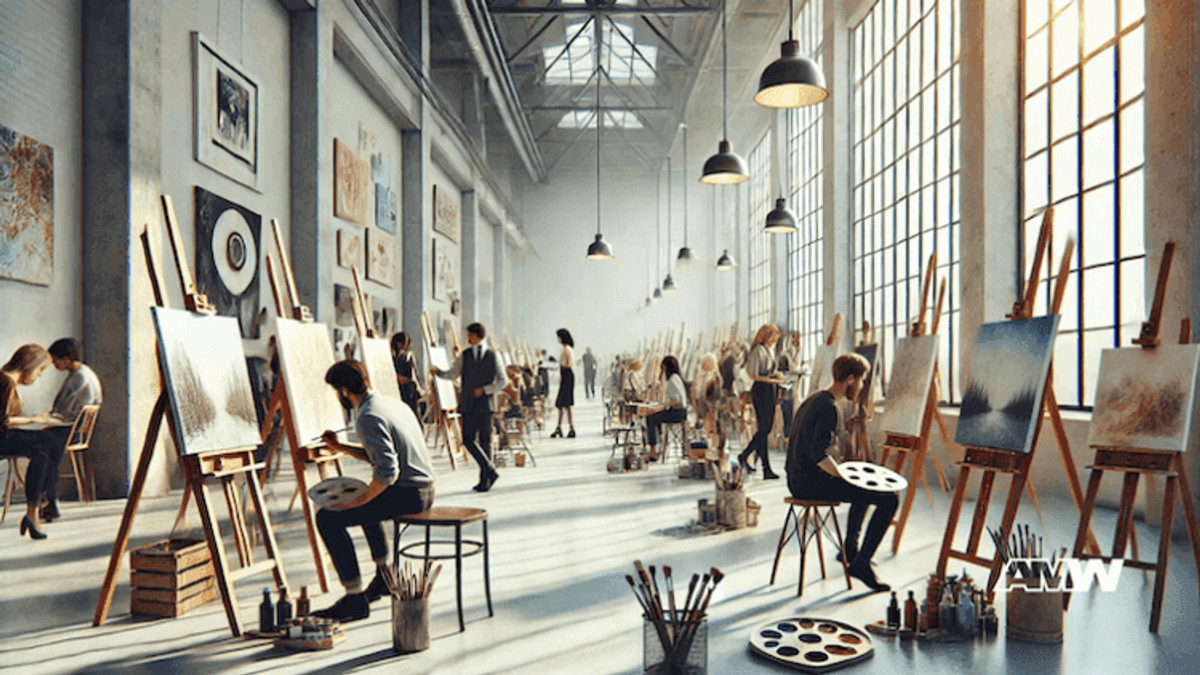
Art competitions and contests are a great way to get recognition and exposure. Winning or even being shortlisted in a reputable competition can boost your credibility and open doors to new opportunities.
Research and find competitions that fit your style and goals. Look for those that offer big prizes, exhibitions, or publication opportunities.
A strong application is key to winning in art competitions. Follow the guidelines to the letter and make sure your submission is polished and professional. Include high quality images of your work, a compelling artist statement and any required documentation.
Even if you don’t win, entering competitions can give you feedback and experience. Many competitions also offer networking opportunities and get your work seen by influential people in the art world.
Teach Art Classes and Workshops
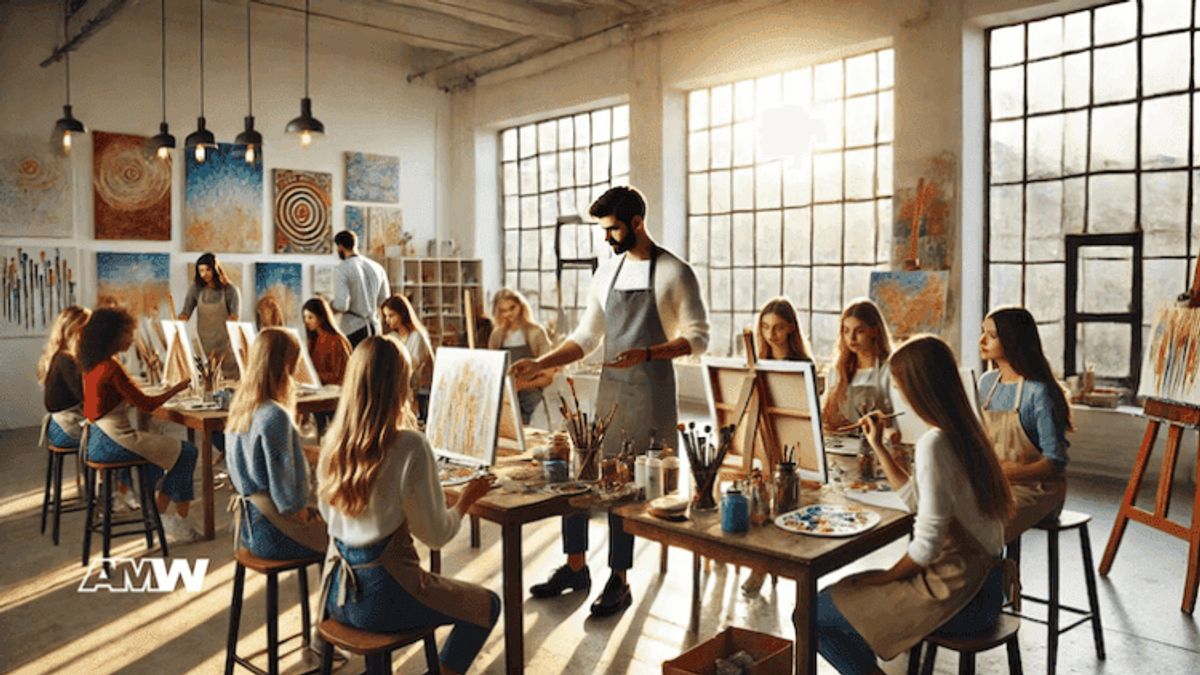
Teaching art classes and workshops is a great way to share your knowledge, build a local reputation and create extra income streams.
Teaching allows you to connect with people who love your work and can become advocates for your art. Whether you teach in-person classes at local art centers or online workshops, you can build a loyal following.
Promote your classes through your website, social media, and local community boards.
Highlight the unique skills and techniques you will be teaching and provide testimonials from past students if you have them.
Ready to Grow Your Business?
Get a free consultation and custom strategy tailored to your goals.
Offering free or discounted introductory sessions can get more people to sign up and build interest in your workshops. Also consider creating online courses on education platforms which can reach a global audience and give you a steady income.
Continuous Learning and Improvement

The art world is always changing, and staying up to date with trends and techniques is crucial to maintaining and growing your visibility.
Spend time on continuous learning through workshops, online courses, and industry events. Engage with art communities online and offline to stay informed about what’s new and what’s next.
Being open to criticism and feedback can help you grow as an artist. Get feedback from peers, mentors, and audiences and use it to improve your work and approach.
Adapting to changes in the market and trying new styles or mediums can keep your work fresh and exciting. Embrace new technologies and platforms that can get you in front of a bigger audience and improve your artistic process.
Summary
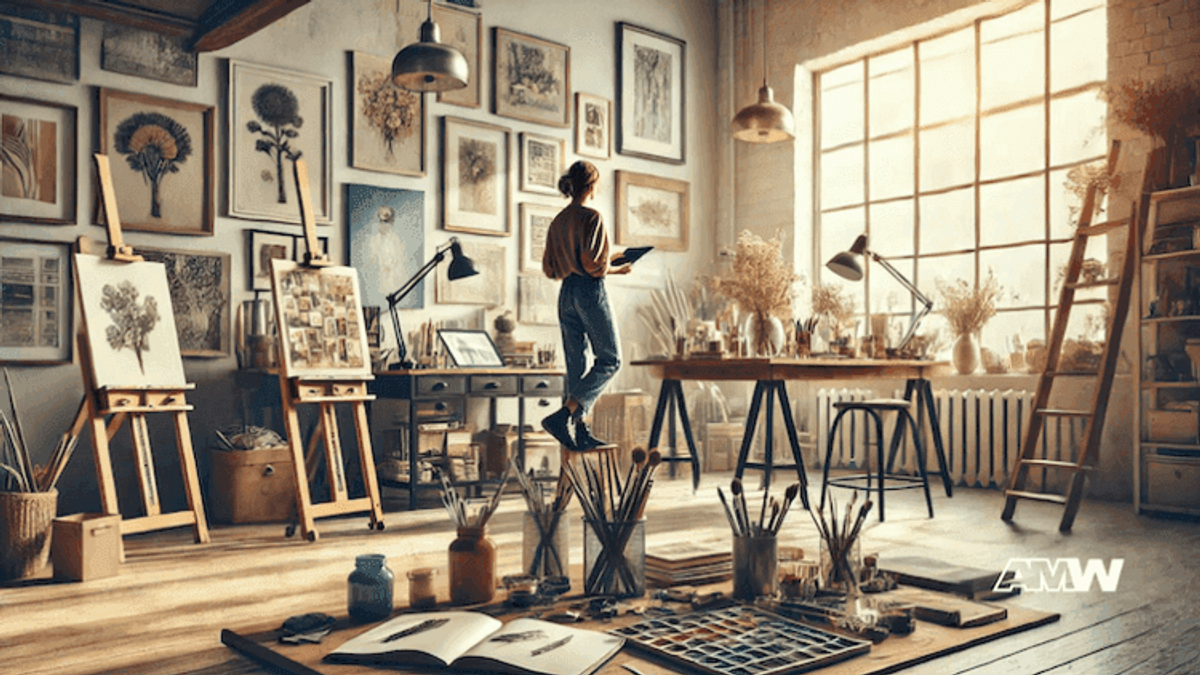
So there you have it: getting your artwork noticed is a combination of creating great work and promoting yourself across multiple platforms and communities.
With a strong online presence, using social media, networking, being part of local art scenes, using online marketplaces, getting media coverage, entering competitions, teaching, and continuous learning, you can get noticed and succeed in the art world.
Be persistent, passionate, and open to new opportunities, and it will all pay off and get your art the recognition it deserves.
FAQ
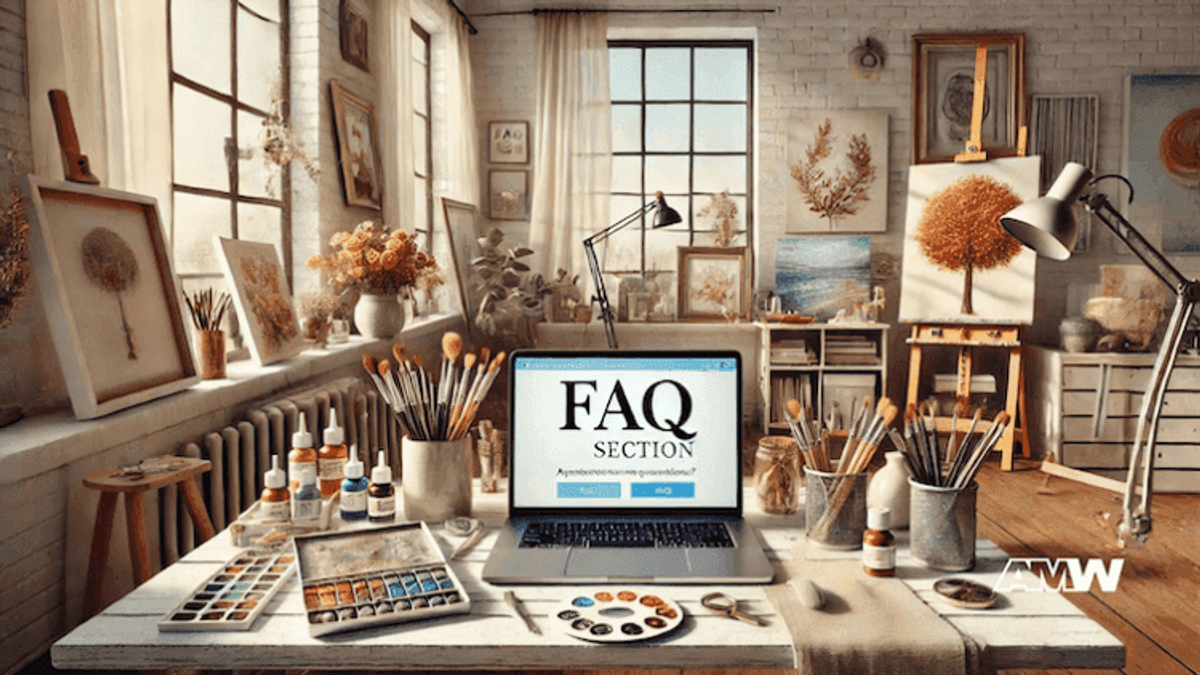
Is social media important for getting my art noticed?
Yes it is, it allows you to reach a global audience, engage with followers and network with other artists and industry professionals.
What are the best online platforms to showcase my art?
Instagram for visual engagement, professional portfolio sites, and online galleries to sell your work.
How do I network within the art community?
Attend art fairs, exhibitions, and networking events, join artist groups and associations, and collaborate with other artists on projects.
What should I put in my artist portfolio?
High-quality images of your best work, a short bio, an artist statement, and contact details. Update it regularly with new work and achievements.
How do I get my art in media and publications?
Contact art blogs, magazines and local newspapers with a professional press release and high quality images. Building relationships with journalists and editors can be helpful.
Are art competitions worth it?
Yes, art competitions can get you visibility, validation, and sometimes monetary rewards. They also offer networking opportunities and can improve your portfolio.
How do I sell my art locally?
Enter local art shows and galleries, offer public art projects, and build relationships with local businesses and community centers.
How can teaching art help my career?
Teaching art helps you build a local reputation, establish a following, and create additional income streams. It also increases your credibility as an artist.
How do I stay up to date with art trends and techniques?
Follow art magazines, blogs and social media, attend workshops and online courses and stay engaged with the art community to continuously learn and adapt.
How do I deal with criticism?
See criticism as a chance to grow. Reflect objectively, implement the good stuff, and keep improving.
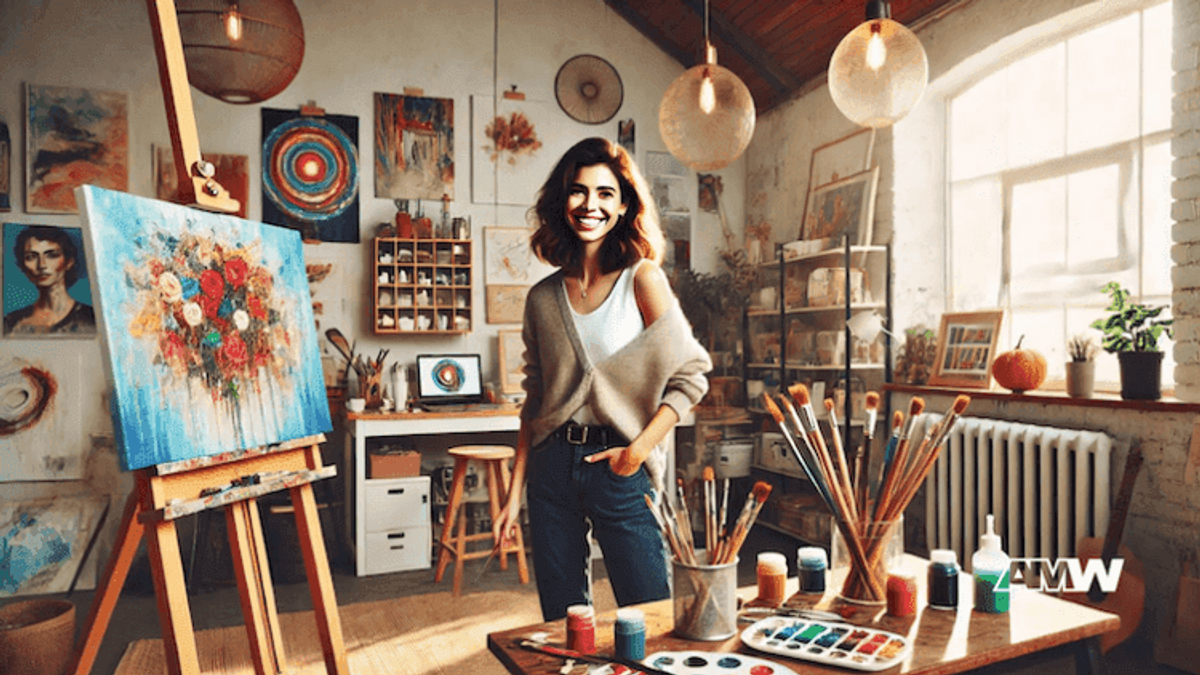
Ready to Grow Your Business?
Get a free consultation and custom strategy tailored to your goals.
Frequently Asked Questions
How long does it take for new artists to get their artwork noticed and build a following?
Building recognition as a new artist typically takes 1-3 years with consistent effort. Success depends on artwork quality, marketing consistency, and networking activities. Artists who post regularly on social media, participate in local exhibitions, and maintain professional online portfolios see faster results. Focus on creating 20-30 strong pieces for your portfolio, engage daily on platforms like Instagram, and participate in at least 3-5 local shows annually to accelerate visibility.
What are the best social media platforms for artists to showcase their work in 2024?
Instagram remains the top platform for visual artists due to its image-focused format and art-friendly algorithms. TikTok is excellent for process videos and reaching younger audiences. Pinterest drives significant traffic to artist websites and online shops. LinkedIn helps with professional networking and B2B opportunities. Facebook works well for community building and event promotion. Focus on 2-3 platforms initially, posting 3-5 times weekly with consistent hashtags and engagement.
How much should artists budget for marketing and promoting their artwork?
Artists should allocate 20-30% of their art income toward marketing and promotion. New artists can start with $200-500 monthly for website hosting, social media ads, portfolio materials, and networking events. Successful artists often invest $1,000-3,000 monthly in professional photography, PR services, exhibition fees, and advertising. Free marketing through social media, artist communities, and local networking can be equally effective when time is invested consistently.
What should artists include in their online portfolio to attract galleries and buyers?
A professional online portfolio should include 15-25 high-resolution images of your best work, organized by series or theme. Include an artist statement, professional biography, CV with exhibitions and awards, pricing information, and contact details. Add detailed descriptions for each piece including dimensions, materials, and inspiration. Ensure mobile-friendly design, fast loading speeds, and professional photography. Include testimonials, press coverage, and a blog showing your creative process to build credibility.
How can artists get featured in art magazines and blogs for publicity?
Research publications that feature artists in your style and medium, then craft personalized pitch emails with compelling subject lines. Include 3-5 high-quality images, a concise artist statement, and any newsworthy angles like upcoming exhibitions or unique techniques. Follow submission guidelines exactly and follow up after 2-3 weeks. Build relationships with editors through social media engagement. Press releases for major milestones, awards, or exhibitions increase chances of coverage.
What are the most effective art competitions for emerging artists to enter?
Focus on competitions with strong industry recognition like the ArtPrize, Bombay Sapphire Artisan Series, or regional arts council competitions. Look for contests offering exhibition opportunities, not just cash prizes. Research judges' backgrounds to ensure they're respected industry professionals. Entry fees should be reasonable ($25-75). Avoid competitions requiring exclusive rights to your work. Local and regional competitions often provide better networking opportunities and realistic winning chances for emerging artists.
How do artists price their work competitively while getting noticed in the market?
Research comparable artists with similar experience, medium, and size works to establish baseline pricing. Calculate costs including materials, time, and overhead, then add 50-100% markup. Start with lower prices to build sales history and collector base, gradually increasing as demand grows. Consider offering payment plans or smaller, affordable pieces alongside premium works. Consistent pricing across all platforms builds credibility and helps collectors understand your market position and investment potential.
Related Articles

Artistic Branding: Branding Tips for Artists
Artistic branding is a crucial aspect of establishing a successful career in the art world. By creating a distinctive brand identity, artists can communicate their unique vision, connect with their au

The Art of Marketing Art
Art marketing is the strategies and tactics used to promote and sell art. It's building a brand, creating content and using social media to reach a wider audience. Art marketing isn't just about selli

Artist Marketing - How to Market Yourself
In this digital age, artist marketing is crucial. Good marketing is vital for independent artists to get seen and sell more in a crowded market. Without a marketing strategy, even the most talented ar


